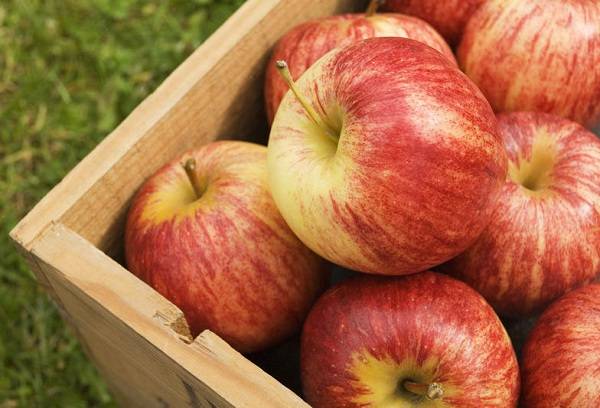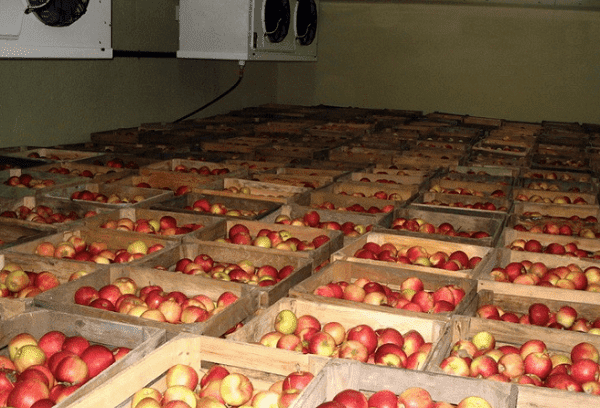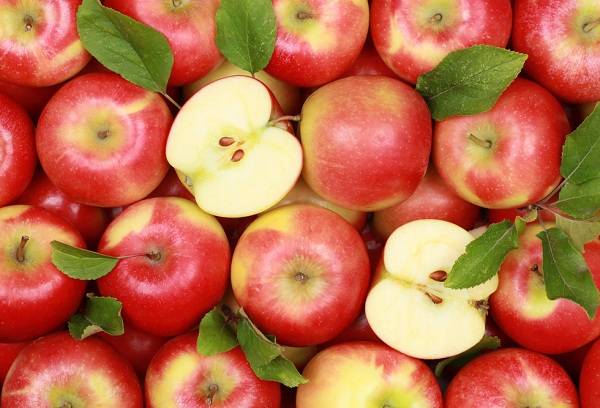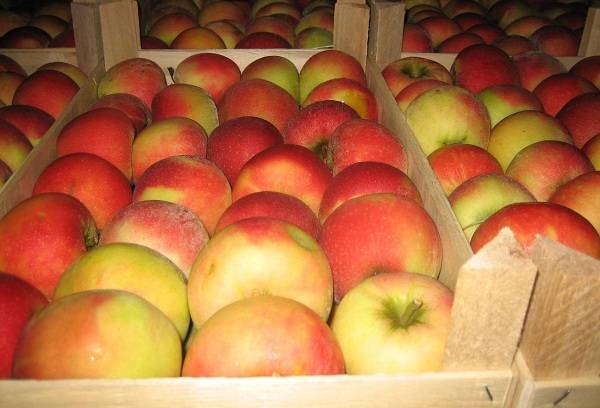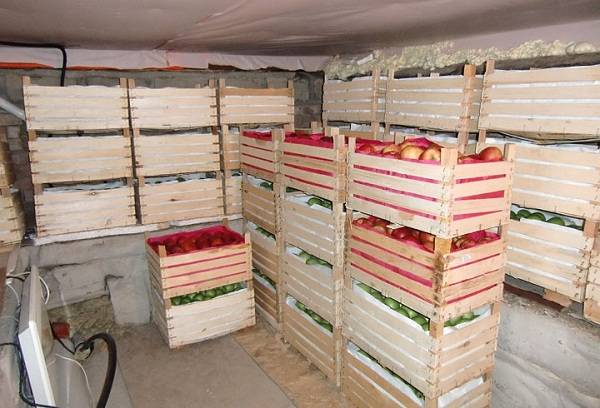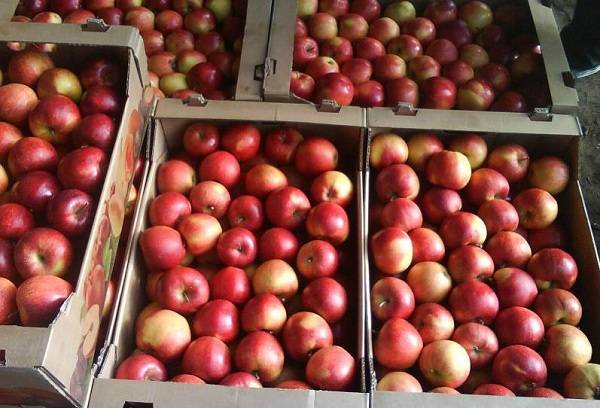Where and how to store apples for the winter?
Content:
Despite the fact that many fruits, including apples, in our time have lost the concept of seasonality, people still try to eat fruits that are characteristic for a particular time of the year. To enjoy nitrate-free foods not only in the summer months, but also in winter, you need to know how to store apples and take care of them when stored at home.
Contrary to popular belief, for this it is not necessary to freeze fruits, cut into slices, or to prepare preservation from them. If you wish, you can eat fresh fruits all winter, you only need to know how to properly approach the creation of appropriate conditions.
Process Features to Consider
Ripe apples give off ethylene. The larger the fruits, the greater the amount of gas released into the atmosphere. Taking into account the fact that this substance promotes faster ripening of fruits and vegetables, it is highly recommended not to store apples in the same room as the root crops traditional for our country (carrots, potatoes, beets).
For storing apples, it is better to allocate a separate room with a suitable temperature. The optimal indicator is 0ºС. In this case, ethylene is released in a small amount, and the pulp of the fruit does not freeze. Permissible temperature limits, regardless of the season, are from -1ºС to + 5ºС. The humidity level should not go beyond 85-95%.
Tip: Even if the potato stocks are constantly updated, do not store it in the same basement with apples. Root vegetables will not have anything, but the fruits will eventually acquire a specific and not the most pleasant starchy flavor.
Do not forget that the shelf life of apples at home directly depends on the variety of fruits:
- It is better not to expose summer varieties to long-term storage.
- Autumn varieties retain their original quality and taste for 2 months while maintaining the temperature at 0ºС.
- Winter varieties can easily survive in the basement for 4 to 7 months. The exact timing depends on the particular variety, temperature and humidity. By the way, it is more correct to store winter apples at plus temperature.
Unfortunately, at home, it is not always possible to achieve optimal environmental parameters. But still, if you follow the basic recommendations, there is a chance to achieve the highest possible result.
How to prepare apples for storage?
There are many ways to preserve apples in an optimal form for the winter, but, regardless of the approach chosen, the fruits must be sorted before starting the process:
- Fruits without stains, dents, cracks, any violations of the integrity of the skin lie the longest. When working with fresh products, you do not need to squeeze them, this contributes to their quick spoilage.
- Wormy apples, although considered the cleanest, are not subject to storage.
- Apples with whole stalks last longer. If this part is not present, then the fetus will quickly begin to deteriorate due to various fungal diseases.
- Tearing or preparing fruits already at home, you do not need to wipe them. Natural wax coating will contribute to their longer storage.
After the correct preliminary preparation, we distribute the apples by grades and size. This will not only allow you to choose the right fruits with all the amenities, but also extend the shelf life.
The easiest and most convenient ways to store fruits
The following options are most suitable for storing apples at home:
- Use of shelving. A very convenient option in which you can purchase ready-made designs or assemble your own. It is best to choose devices with extendable sections in which the fruits are laid out in one layer. In order for apples to survive the winter, they must be placed so that they do not touch each other.
- Using wooden crates. A very popular method, which has its own nuances. Most often, the owners prefer to put the boxes on top of each other to save space. In this case, it will not properly fill the containers with fruit to the eyeballs. Otherwise, they will begin to crumple and quickly deteriorate. In addition, fruits should be laid out only by hand, so they will not be damaged or beat. We carefully monitor that the stalks do not scratch the skin of neighboring apples. When using high drawers and multi-layer laying, be sure to lay all layers with special supports.
- Use of wooden containers. This option is only suitable if you work with fresh apples that are not planned to be stored for months. Whole winter, fruits that press against each other, in any case, can not stand it.
- Use of cardboard boxes. This approach is also often resorted to at home. In this case, the storage of apples is carried out according to the same principle as in the case of wooden crates. The main thing is to carefully glue all the cracks with tape so that the structure does not fall apart.
It is not only important in which direction the stem is turned, you only need to achieve maximum accuracy of the masonry. Again, it does not matter in what order the fruits are arranged, if only they do not touch and press against each other. If there are a lot of fruits and it is not possible to arrange them in separate rows, then it is worth remembering that those apples that are located at the bottom of the box will deteriorate more quickly. They need to be used first.
If you plan to store only a few kilograms of apples at home, then you can take additional steps to process them:
- Fruits are wrapped in newspapers, paper towels, or oiled parchment. True, the owners often refuse the first option, because there is a risk of ink poison from entering the food product.
- Often, fruit is sprinkled with shavings of hardwood.
- Some use straw, but according to numerous reviews, the fruits then acquire a specific taste.
More "advanced" gardeners prefer to fumigate the containers themselves for storing apples or premises. This also gives a certain advantage, but only if all manipulations are carried out according to the rules.
